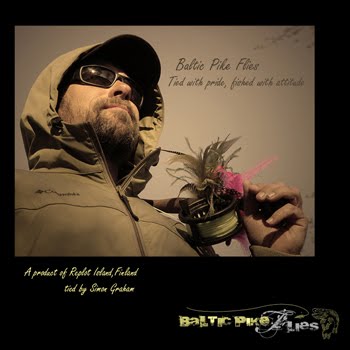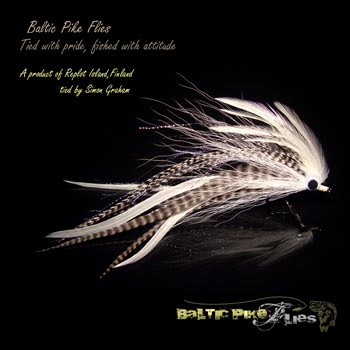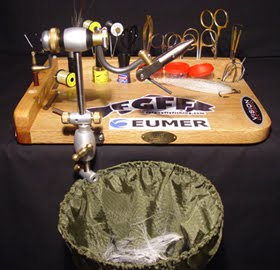I know many of you out there hold strict views with catch & release policies, me included but to be honest I also like to eat pike and always take one back home with me for dinner. Many of our guests have never had the opportunity to taste pike and so we offer them a choice of one of these delicious dishes to try, and as I teach outdoor cooking courses with pike in mind nearly all these can be cooked over an open fire as well. All these recipes have slowly evolved through trail & error over the last 5 yrs and I promise you everyone is delicious.
Thai Chilli Pike with stir fly veggies and noodlesOn the stove or over the campfire2x Pike Fillets
2 x teaspoon Thai chili Sambal-Oelek paste
2 x Spring onions (Finely chopped)
Mayonnaise
Butter
Pinch of salt
1 packet stir-fly vegetable mix
Portion of noodles
2 x table spoons olive oil
1 x table spoon nut oil
OvenPlace both Pike fillets in to glass oven dish
Sprinkle with a pinch of salt & Lemon Pepper
Spread Thai chili Sambal-Oelek paste over fish
Sprinkle with finely sliced spring onions
Cover with a generous helping of mayonnaise
Leave in oven for 20min 180’c gas mark 3
Boil noodles then drain
Place Olive oil & nut oil in to the hot wok
Empty stir fry vegetables in and fry till crunchy
Mix in noodles
Serve Pike over the bed of noodles & vegetables in a bowl
Open FirePlace each Pike fillet on top of a separate sheet of tinfoil
Sprinkle with a pinch of salt & lemon pepper
Spread Thai chili sambal-oelek paste over fish
Sprinkle with finely sliced spring onions
Cover with a generous helping of mayonnaise
Enclose all ingredients in a parcel and place on coals for 20min
Place stir fry vegetables in to wok and fry till crunchy
Mix in noodles
Serve Pike over the bed of noodles & vegetables in a bowl
Beer & Peanut butter battered Pike with spicy potato wedges2 x Pike fillets cut into chunks of your choice (add pinch of salt)
400dl Barley flour
1 x bottle beer
1 x teaspoon peanut butter or nut oil
3 or 4 larges potatoes
Olive oil
Mixed spices
Place Barley flour and peanut butter or nut oil into mixing bowl and slowly add in the beer.
(I prefer a Guinness or dark beer but a normal larger works just as well)
Mix with egg whisker until the consistency of thick paint and place the bite sized chunks of pike inside the batter.
Place generous helping olive oil in bowl
Add mixed spices (Taco or tortilla Mexican spices will do perfect)
Slice potatoes into wedges
And soak in olive oil spice mix
Place on an oven tray and leave for 30min at 180’c or gas mark 3
15 Minutes before the potato wedges are ready, heat oil in Pot
Once boiling, place 2 or 3 pieces of pike from the batter & deep fry into the oil
Turn once until just golden brown approximately 1 min.
Serve with wedges
Moroccan Pike with Couscous2 x pike fillets cut in to pieces
Pesto
1 x jar Sun dried tomatoes in olive oil (take out 5 dried tomatoes for couscous)
10-20 Fresh basil leaves
3 x garlic cloves
Approximately 20Pine needles
Place all in a Liquidizer and mix into a pesto
Place 2 x pike fillets into glass dish and cover with a generous helping of pesto
Cover with mayonnaise
Place in the oven 180’c or gas mark 3 for 20min
Couscous
1 cup couscous
400dl warm water
5x Sun-dried tomatoes
Approximately 10Capers
6 to 8 Mushrooms
Half a Red pepper
Half an Onion
Pinch of salt
Finely chop all the ingredients and fry in a little butter until sautéed
Add the cup of couscous and mix in vegetables
Add the 400dl warm water and let simmer over a low heat for 1min
Cover with lid and leave
Once the pike is simmering take out and serve with the couscous.
Spicy Pike fish fingers served with fresh steamed vegetables & potato gratinOn the stove or over the campfire2 x pike fillets cut into finger size slices
Bread crumbs
Mixed spices
2 x eggs
Beat two eggs in a bowl
50ml cream
6 x potatoes
2 x garlic cloves
Place and overlap potato slices in glass oven dish
Lightly salting each layer
Finely chop garlic and sprinkle on top
Pour cream over and cover with cheddar cheese
Place in oven 200’c gas mark 3 for 50min
Add mixed spices to bread crumbs in another bowl
Dip pike slices into egg and then roll in to bread crumb mix
Shallow fry in a frying pan with oil until golden brown
Serve with steamed vegetables of your choice
Dutch Brie Pike with sherry sauce and new potatoes On the oven or over a fireplace2 x pike fillets
Mayonnaise
Paprika
Pinch of salt
Brie cheese
5-10 Capers finely chopped
10 x Sweet or new potatoes
OvenPlace pike fillets in to glass oven bowl
Sprinkle finely chopped capers over
Cover with mayonnaise
Sprinkle with paprika
Cover with Brie slices
Place in oven for 20min at 180’c or gas mark 4
Open FirePlace each Pike fillet on top of a separate sheet of tinfoil
Sprinkle finely chopped capers over
Cover with mayonnaise
Sprinkle with paprika
Cover with Brie slices
Enclose all ingredients in a parcel and place on coals for 20min
Boil potatoes till soft
Sherry cream sauce2 dl Crème fraiche or cream
1 cube vegetable stock
1 dl Dill
1 tbsp butter
1 dl sherry
Boil the vegetable stock and the sherry till half boiled down.
Add the crème fraiche & Butter
Add freshly chopped Dill
Use over fish and potatoes
Baltic Pike cooked in Chanterelle sauce served with asparagus headsOn the stove or over a fireplace2 x fillets pike cut in to bite sized chunks
Add a Pinch of salt & Lemon Pepper
2 dl crème fraiche or cream
1 onion
1 tbsp butter
10 capers
1 ltr Chanterelle mushrooms
Asparagus heads
Broccoli
Heat frying pan a place the chopped Chanterelle mushrooms in and cook down.
Pour out the excess water from the mushrooms
Add the finely chopped onion with the butter and sauté down
Add the crème fraiche and stir in the capers
Add the pike pieces
Slowly turn ingredients till you see the pike is cooked 5-10min
Serve with steamed Asparagus heads and broccoli














































